Kotesu is a ship of unusual fate (a dramatic story in six acts with a prologue and an epilogue). Part Three
Having touched the sweet melon,
The fox pulls over ...
(Shirao)
And in Japan it was that in October 1867 of the year, the all-powerful shogun Keiki-Yoshinobu from the Tokugawa clan, the clan who ruled Japan for more than two and a half centuries, decided on an unheard-of deed - resign and transfer all power to the emperor Mutsuhito Meiji, who was still very young, fourteen . Up to this point, the emperor in Japan was a purely nominal ruler, and the truly all-powerful sei-and-taisogun, commander-in-chief of the army against the barbarians, simply the shogun, and his samurai government, bakufu, ran all affairs in the country. The shogunate was a feudal structure brought to an absolute totalitarian regime. The voluntary transfer of power from the shogun to the emperor meant a truly great event. In place of the medieval military nobility, fed by the shogun's bounty, now came the new nobles and the third estate, now supporting the new overlord - the emperor. The shogun realized that he was unable to retain power, and chose a wise decision — he yielded it himself. However, Yoshinobu hoped that his privileges would be kept behind the Tokugawa house. But it turned out differently. 3 January 1868. The emperor not only proclaimed himself the sovereign ruler of the country, but also announced the confiscation of lands and property of the Tokugawa clan. Yoshinobu had no choice but to leave the samurai troops loyal to him to the imperial headquarters in Kyoto, that is, to start a revolt against the "bad advisers" of the young emperor. Another civil war began in the country, known as the “Bosin War” (“Boshin Senso”), or literally: “The War of the Year of the Dragon”. Already 27 January 1868, the forces of the shogun were defeated at the villages of Fushimi and Toba, after which he fled to Osaka, and from there he moved to Edo (Tokyo). A bitter struggle began between the supporters of the shogun and the emperor's party.
"Cotetsu" - "Steel Shell" - the first Japanese battleship fleet.
Well, it all started with the fact that in 1854-1858. the Western powers, having defeated the decrepit China in the opium wars, decided to “open” Japan too. Before 1842, the Japanese fired on all foreign, that is, in their opinion, “barbaric” ships that tried to land on their shores, but now their attitude to foreigners has changed, the arrival of Commander Matthew Perry in 1852 and 1854 was forced Shogun and his bakufu open ports for the United States, Britain, France, Holland and Russia, which immediately imposed feudal Japan on enslaving treaties, which caused an increase in outrage, especially among the samurai who did not want to "bow before the West." When an extremist samurai was killed by an English merchant Richardson in 1862, the authorities decided to ignore the protest of the British consul, and supported the samurai nationalists. Moreover, on June 12 of the fateful 23, the bakufu announced the closure of all ports for foreigners, and the next day it intended to declare war on all foreign "barbarians". In the principality of Choshu, the enthusiasm was so great that an American ship, the Pembroke, was shelled there in the raid.
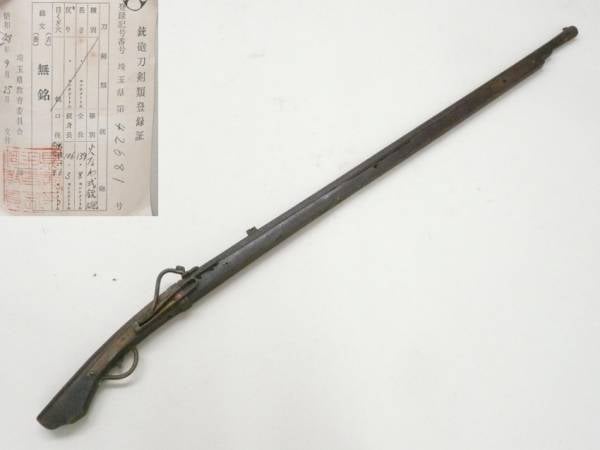
Surprisingly, even in 1864, the Japanese still used such guns! It was called "this" - hinava-ju!
But the “barbarians” responded to the challenge very quickly and smoothly: the American frigate “Wyoming” under the command of Captain McDougle immediately sank two Japanese ships and, together with the French assault force from the ships of Admiral Zhores, actually destroyed the city of Simoneseki, while the squadron of the British vice Admiral Augustus Cooper bombarded and wiped out the city of Kagoshima. Shogun Iemoti, Yoshinobu's predecessor and a completely mediocre person, agreed to all the demands of foreigners, paid contributions and even began a punitive campaign against the samurai of the Tesuu and Satsuma principality, who at that time launched the slogan "Down with the shogun, with the emperor against the barbarians!" But in July, 1866, during another punitive expedition, Southerners defeated the troops of Bakufu. Iemoti fell ill and died, and it was here that he was replaced by the clever and liberal Yoshinobu, a shogun who decided to modernize the army and fleet according to European standards. The rate of borrowing by the Japanese of the latest technological advances of Europeans even then surprised them. And they decided to take advantage of it. In 1867, the French military mission led by Jules Brunet, who had just fought in Mexico, arrived at the headquarters of the shogun. Under the general command of the Japanese general Otori Keisuke and the Frenchman Jules Brunet, four brigades were formed, headed by French officers: Fortan, Le Marlene, Kazenev, and Bouffier. The technical infrastructure and arsenals were created under the leadership of engineer Francois Verny. For the new Japanese army purchased the most modern weapon.
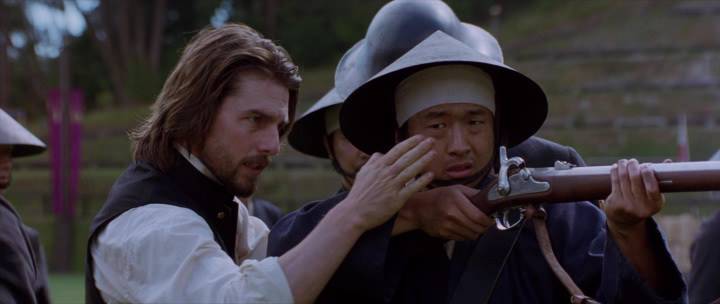
So they taught them to use modern weapons! Shot from the movie "The Last Samurai."
And just then, in the USA, for 40 000 dollars was bought on the occasion of the battleship "Stonewall". But as he sailed across the Pacific, a rift arose between the shogun and the emperor. He was too clever and influential to Yoshinobu and ... what if he would push the young emperor back from power this time? Who would then be his new supporters? But the Japanese believe that everything that happens is ... karma!
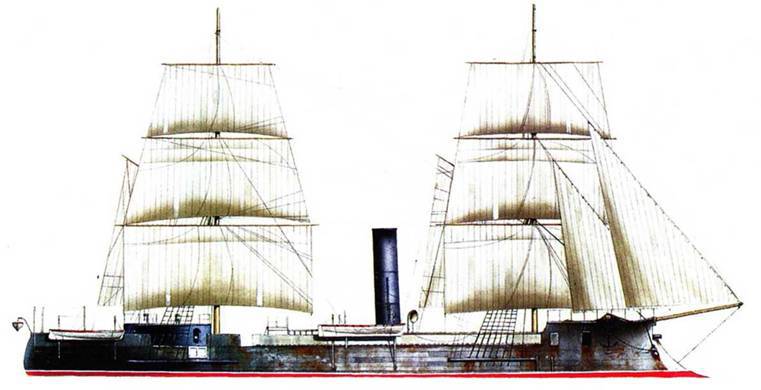
"Stonewall" under sail. During the passage through the Pacific Ocean, the ship often sailed. The team saved coal.
But 24 on April 1868, when the battleship finally arrived in Yokohama, occupied by the imperial troops, neither its commander, nor his team, even suspected what was happening in Japan ... Their business was just to bring the ship to the site destination.
Well, now it’s time to write off the “goods” in more detail, for which the Japanese laid out such a significant amount of money at that time. As is known, the ship was built in France, at the shipbuilding enterprise of the company L'Arman Frere in Bordeaux. We laid it in 1863, launched it in 1864, completed it in 1865.
"Stonewall" had a snap brig.
But his sistership "Prince Adalbert" for some reason snap brigantine. In addition, he had a different design of the bow - a ledge, where the real gun port was built for the Danish battleship with slightly larger angles than the Sphinx.
The vessel's performance characteristics were as follows: the displacement was 1479 t official, 1440 t "normal", 1560 t full. The length of the waterline 50,48 m, and 52,36 m (between perpendiculars), the width was equal to 8,78 m, 9,92 on the constructive waterline. Draft 4,94 m (nose), 5,02 m (stern), height of the freeboard 5,78 m, depth of the hold 5,18 m.
The hull had a composite set and was assembled from metal structures, and had a wooden lining, over which its underwater part had a lining of thin copper sheets to protect against fouling. The bow end ended with a strongly ramming forward ram (spyrone, as it was then called “decoration”), which was a continuation of the keel. At a distance of about 2 / 3 length from the stem, the keel diverged to the side of the median plane, and formed a kind of arch. This provided the ship with excellent ramming capabilities. Remember, in Virginia, the ram was broken off after the Cumberland ram. At any angle, on the Stonewall, he would crash into the enemy's side, such an incident would not threaten him.
The ship had two propellers, two screws and two rudders. Vertical board at a height of 0,8 m from the waterline had a bend inward. Between the front and rear armor casemates was a thin bulwark, which during the battle had to be removed. The guns, as also noted, were three. One in the bow casemate with a port under the bowsprit, and two in the aft, round, with four embrasures. It was believed that since the shells of the enemy's guns could not penetrate his armor, then ... why did he need a lot of guns? The ship had a high chimney, two masts and a full brig sailing rig.
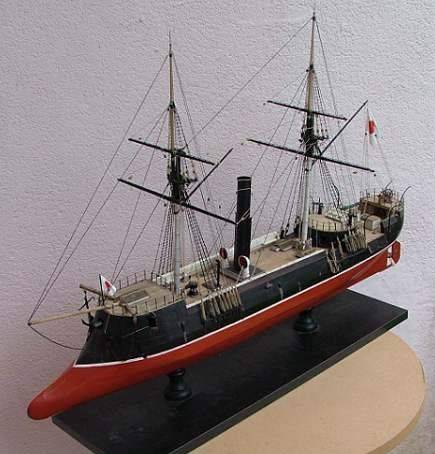
Model of the battleship "Kototsu" - the flagship of the Japanese imperial fleet.
Act six, or "flame in the night."
Whimper, whimper - must be decided
What a hawk napping.
(Basho)
The shogun’s confrontation with the emperor ended in defeat for Yoshinobu. The American and British advisers still managed to create for the emperor a small but well trained and quite modern army at that time, whereas in the fifteen thousandth army the shogun had only a small percentage of people armed with modern weapons. No matter how hard the French tried, they didn’t manage to arm the shogun army, so even a triple superiority in numbers did not help him. In addition, therefore, many samurai patriots were so naive that they took the side of the emperor, which was later regretted that, in general, it happened not only in Japan. As a result, in May, Edo - the capital Yoshinobu surrendered, and he himself was deprived of all titles, rights and wealth ... put under house arrest. And here it is time to think again about karma, only now not the former shogun, but the ship “Stonewall”, which had an amazing karma - always late. In principle, he was late this time too, however, due to a number of specific circumstances, he still managed to make war!
The fact is that the Japanese at that time had their own ideas about the oath, therefore, Yoshinobu's officers did not consider the overlord's surrender a sufficient reason to stop the resistance! Therefore, the shogun's fleet, commanded by admiral Takeaki Enomoto, as well as three thousand samurai Otori Keisuke and several French instructor officers crossed over to the island of Ezo (Hokkaido), and decided to continue the fight there. Emperor Meiji immediately ordered the French military mission to leave Japan, but Jules Brunet decided not to obey this order, not wanting to leave his students at such an difficult time for them. In a letter to Napoleon III, he vividly explained that "he decided to die or serve the cause of France in this country."
Tokugawa Yoshinobu flees after losing a battle near the villages of Fushimi and Toba. Japanese uki-é engraving.
And 25 December 1868, all these "last samurai" took, and declared ... a republic on the American model! Surprisingly, the old-fashioned samurai did not have anything against such a "democracy", that's how. More important was the lineage of the party that is fighting for power. "Our" - so let at least the republic, "not ours" raise the sword and against the emperor! Admiral Enomoto was chosen to suck - the first and only stories Japan's president.
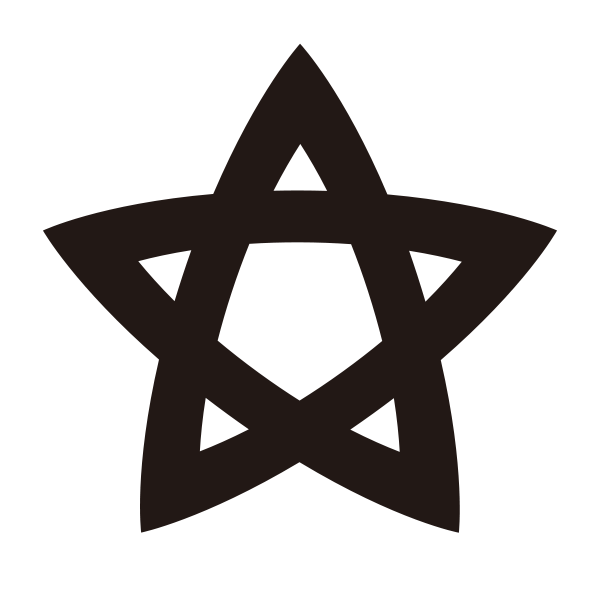
The emblem of the Republic of Ezo or the Northern Alliance.
Far from immediately, the world powers decided for themselves which of the two governments they should recognize as legitimate. Emperor Napoleon III, in spite of the British, decided to support the "American" republic, while the American republic made a bid for the Japanese emperor. For a long time the Americans decided “to be friends with whom,” but nevertheless they decided and in January the detainee was finally handed over by the “Stonewall” to the lawful, in their opinion, owner. The ship was named Kotesu and became the flagship of the new Japanese imperial fleet. Here it is necessary again to digress a little and say a few words about the features of the Japanese language. The fact is that the word "ko" in Japanese is extremely multi-valued. There, in general, the same word can mean completely different things, depending on the stress. For example, ka'ki means an oyster, kaki 'is a persimmon. Similarly, "ko" is a tortoise shell, and just a shell, and much more. And tetsu is steel. That is, literally, the name of the ship meant "steel shell". So, having gotten this indestructible ship, the emperor decided to destroy the nest of conservatives with one blow and sent a fleet and troops from 8000 to the Ezo soldiers. His opponent, Admiral Enomoto, had quite modern steam ships acquired in different countries of Europe, so the war at sea for the republic at the beginning was very successful. 28 January 1868, the flagship of the rebellious fleet “Kayo Maru” in the Gulf of Ava near Osaka, attacked the two imperial vehicles “Hoho” and “Heiun”, which in turn were covered by the imperial flagship “Kasuga”. In the battle, “Kasuga” received damage from artillery fire and escaped from the “battlefield”, but the “Hoho” who had lagged behind him was blown up by his own team, who did not want to surrender. But “Kayo Maru” died during a storm in November 1868, and the Americans gave it to Kotetsu.
Now it became obvious to all that the Republicans had lost: experts considered the steel battleship "invulnerable", and its voyages across the ocean showed that it was also "unsinkable." It only remained to hope for a chance, and it was here that the French advised the Japanese to take advantage of this very occasion - that is, to attack the imperial ships unexpectedly and take them by surprise. Meanwhile, the imperial squadron consisting of Kototsu, Kasuga, Mo-sun, Hiryu, Teibo and Yoharu slowly approached Hokkaido. The first three ships arrived in Miyako Bay before the others, and it was then that the time for the treacherous blow "from around the corner" came. 25 March 1869 in the twilight of the night Miyako’s raid entered the ships of the Republican "Kaiten", "Banr" and "Takao", commanded by French instructors. Since Henri Nicole was born in Bordeaux, and was familiar with the shipyards of Armand, and the characteristics of the Sphinx, he was entrusted to command the flagship Kaiten. And the American flag was developing on it, and the Russian flag was on the Banryr. Approaching the imperial battleship, the attackers immediately raised the flag of the republic with a five-pointed star and rushed together to attack. Nicole decided to repeat the “Kaiser” feat at Liss and tried to ram the battleship on a wooden ship, and then board him!
However, the description of this attack in different sources varies greatly. For example, in one of them it is reported that the commander of the ship was still a Japanese, not a Frenchman, and he did not want to ram the battleship, but only take him to the boarding. And the matter didn’t work out from the very beginning, since the wheeled steamer couldn’t get up side by side with the screw ship - the wheel covers hinder. In addition, the Kotetsu board was taller than the Kaiten board, and the assault team had to climb onto its deck through this same wheeled casing.
All this was so unexpected that the battleship team did not immediately realize what was happening, but nevertheless realized and opened fire on the attackers of two mitralles of Gatling mounted on the bow and stern artillery dungeons. Then the fire was transferred to the bridge "Kaiten", where the Japanese commander of the ship was killed.
In the meantime, the Kasuti and Mosun ships sounded the alarm, their commanders took their guns, and the Republicans opened fire, so the night flashed with fiery flashes of gunfire. They began to retreat, and so hastily, that the Takao stumbled upon a rock in the dark, got a hole and sank not far from the shore, and the French instructor Eugene Collash, who was aboard him, escaped, but was captured ...
The ending should ...
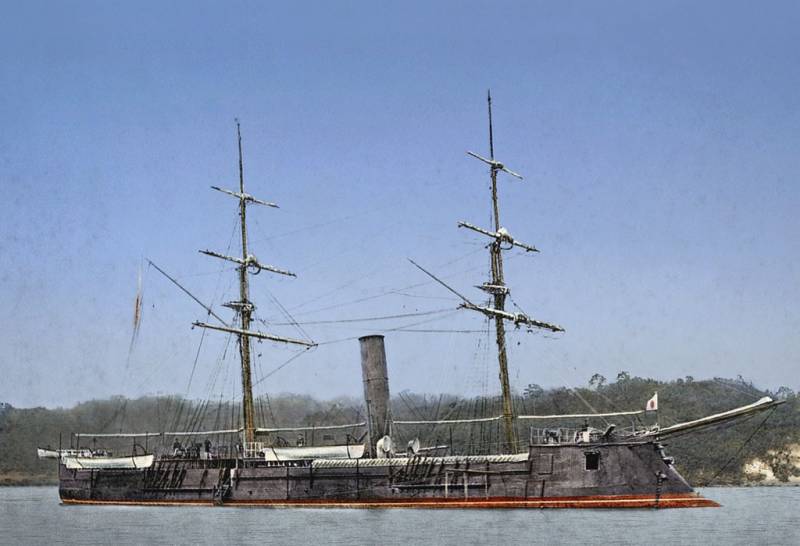
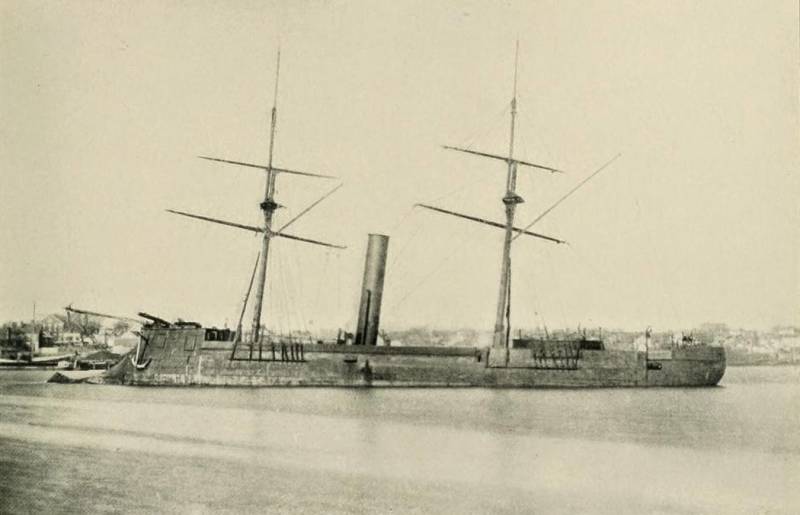
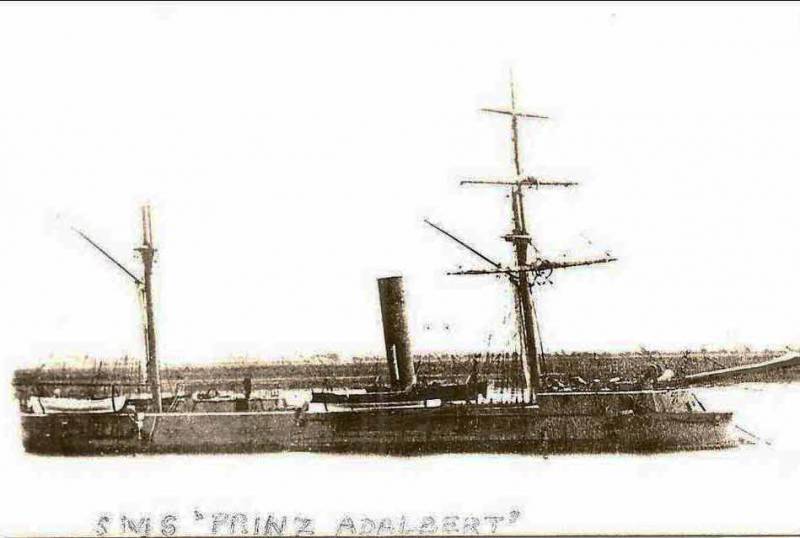
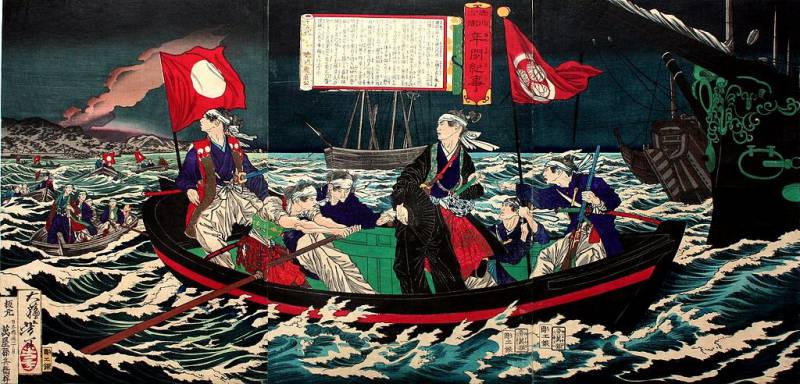
Information